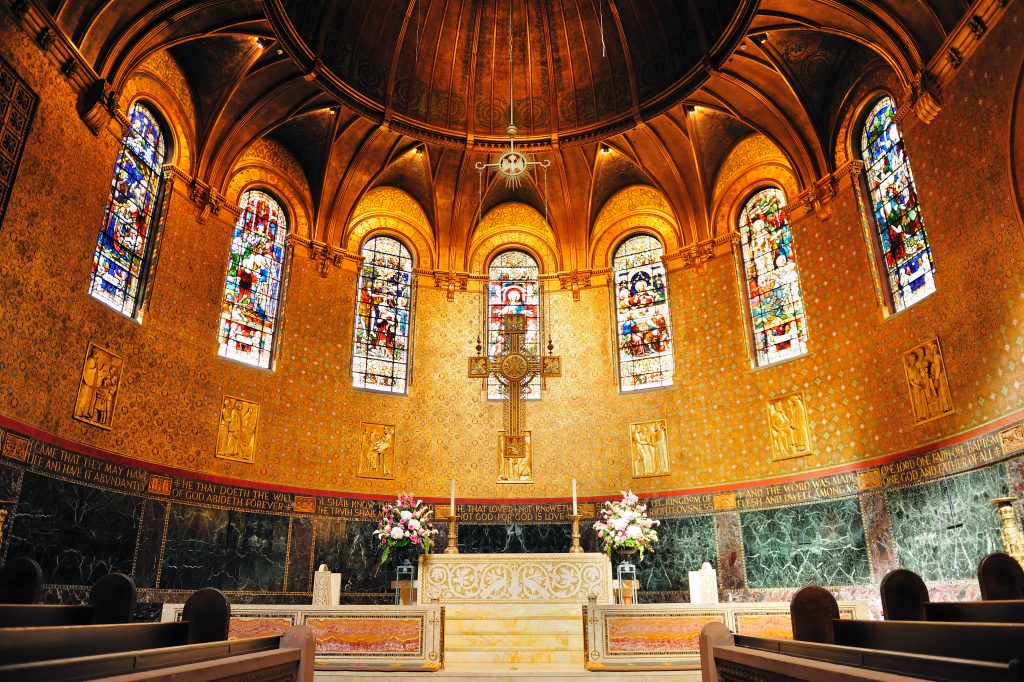Church culture is one of the key elements to keeping members in the church. After membership fell below the majority for the first time in 2020, when just 47% of people attended a church, major changes were enacted by congregation leaders.
And one of these changes is focusing more on church culture.
If you’re not sure what culture entails, you can’t correct the many reasons that people leave the church in the first place.
What Is a Church Culture?
Many leaders want to create a supernatural culture church, where people are strongly devoted to their congregation and will do anything for the members. When you view a congregation, it’s a sum of all parts (members), which have unique:
- Characteristics
- Beliefs
- Practices
- Values
- Behaviors
And what brings all of these people together? Faith. God. Religion. Church leaders can shape the future of the congregation through their mission, beliefs and values. You want to create a place that people love coming to because it offers spiritual growth and engagement.
The Importance of Healthy Church Culture
Community culture church is important because everyone is moving toward the same goal by following the church’s vision. You’re working on shaping people’s lives and spreading the word of God to members and the community.
But you also realize that there’s no linear path that every member will follow.
Your internal culture as a church is about creating an environment in which people can practice their religion, grow spiritually and participate in ways that weren’t possible before.
If your culture is unhealthy, it can lead to:
- Stunted spiritual growth
- Disunity among the congregation
- Lack of fulfilling the church’s mission
Church leaders who question the impact of culture need only to look at the reasons people are abandoning their churches to understand its vital importance.
The Top Reasons Why People Leave Churches


Toxic church culture is inherently unhealthy and one of the top reasons people are leaving their churches. Members want to focus on worship – not politics – and that is one of the cultural reasons people are starting to find ways to worship outside of the church.
People come to congregations to learn and dig deeper into scripture rather than focus on the other areas of life where opinions may differ greatly.
Where many church leaders are going wrong is their failure to understand:
- Societal norms are changing. Many people want to have revamped interiors, online attendance and an environment to worship that is both fun and fostering.
- Moving is a major issue. Remote work and a continuance of changing jobs make it challenging to keep members for long. Online options can help.
One survey found that since friends and family weren’t attending, they didn’t want to join the church.
What are the Components of Healthy Church Culture?
Churches must focus on a multi-tactical approach to create and foster a culture that allows them to thrive at a time when membership levels may dramatically change one year from another.
Traditions And Rituals
Traditions and rituals are at the heart of every church, and they’re not just supernatural in nature. They should align with the rituals of Christianity and help your church progress toward reaching its goals.
Values And Beliefs
To build a healthy church and culture, it is crucial to identify and model empowering beliefs, such as:
- Service – the belief that we are called to serve others and God.
- Trust – the belief that growth requires trust. Congregation members should feel that the church is a safe environment.
- Collaboration – the belief that working together builds relationships.
Your church may have additional values and beliefs. Make sure they’re clearly defined so that your church can continue to work towards the same goals.
Community Engagement
A healthy church culture engages with the community and creates an inclusive environment where everyone feels welcome and comfortable attending service.
Beyond community events and outreach, churches can update their physical environment to encourage members of the community to attend service.
Updating and modernizing the church’s interior can help draw in younger members. Investing in comfortable church chairs, brightening up the space with new interior design and creating a welcoming exterior can all do wonders to engage the community.
Communication Style
Often, unhealthy church culture stems from poor communication styles. Churches should aim to communicate with their congregation regularly – not just during service – and to spread the word of God in a positive, loving way.
Churches can support a healthy culture by following these communication practices:
- Sending regular or weekly emails. You can share inspiring stories of people in your congregation, keep everyone up to date on church events or whatever is relevant to your church.
- Livestreaming or posting your weekly sermons on social media for members who are unable to attend in person.
- Ensuring your message is consistent across all platforms.
- Developing a presence on social media and interacting with members regularly.
Additionally, it’s important to ensure that your messages are personalized. Consider segmenting your congregation members to send relevant messages to different groups.
Worship Practices


To cultivate a healthy church and culture, it’s important to ensure that your worship practices are inclusive, and your message is focused on what really matters.
- Make sure you’re not just preaching to the front row or the choir. Focus on reaching visitors who really need Christ in their lives.
- Practice authenticity and integrity. Ensure that your church is building a reputation for being a great place to worship and join a community.
- Serve the community and each other without competition.
Organizational Structure
A healthy church culture has an organic structure that helps – not hinders – your efforts. Your structure should support and serve your culture and vision, which means that it needs to be dynamic.
A healthy organic structure:
- Establishes a mission-centric framework
- Provides space for the church’s culture to grow
- Prioritizes the use of its resources to achieve its vision
When the organizational structure helps the church achieve its mission and has room to grow and change over time, congregation members tend to be happier and more committed to the community.






